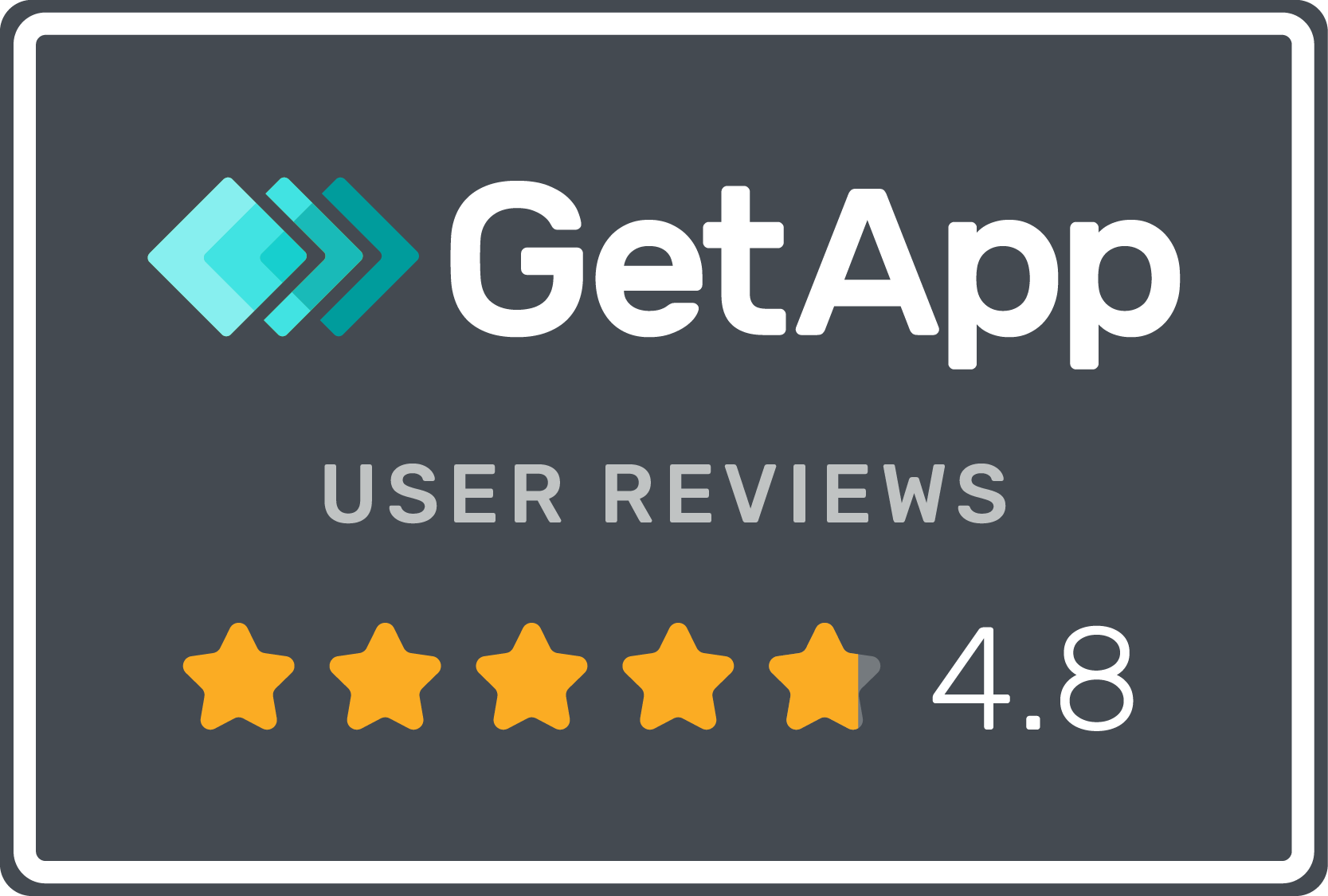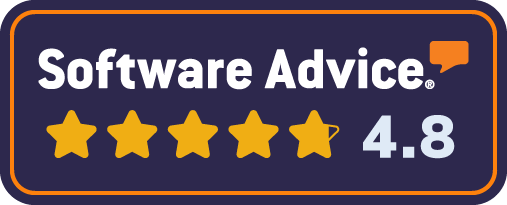MemberLeap Blog
Back to BlogsIn our daily consulting with clients and prospects at MemberLeap, we frequently discuss the importance of the organization's brand. Does your organization have a brand style guide to oversee its brand? Do all the team members (staff, employees, volunteers, board members, etc.) know what it is and how to use it? If you do not have one yet, it is relatively easy to set up and maintain.
Your brand style guide needs consistency, and addressing the issue promptly is essential to maintaining a cohesive and professional brand image. Here are some steps you can take:
- Review and Identify Inconsistencies: Gather and carefully review your brand style guide and identify areas where inconsistencies exist. This could include discrepancies in color usage, typography, logo placement, tone of voice, etc. Review all materials, documents, websites, logo files, promotional items, email signatures, etc., used.
- Establish Clear Guidelines: Once you've identified inconsistencies, establish clear and comprehensive guidelines for each element of your brand. Clearly define rules for logo usage, color palette, typography, imagery, and other relevant aspects.
- Document Guidelines: Document the guidelines in your brand style guide. Make sure it's easily accessible to all team members involved in creating or using brand assets. This could be a digital document, a PDF, or an online brand portal.
- Communicate Changes: Communicate the updated guidelines to all relevant stakeholders, including designers, marketers, content creators, project committees, boards, team members, and anyone else who may interact with the brand assets. Make sure everyone understands the importance of consistency and adheres to the guidelines.
- Provide Training: If there are specific areas where team members need additional training to understand and implement the guidelines effectively, please provide training sessions or resources to help them, especially for any new team members. Make sure all are included, from in-person, hands-on training to virtual training sessions.
- Regular Audits: Regularly audit your brand materials to ensure ongoing consistency. This could involve spot-checking marketing materials, social media posts, website pages, etc., to ensure they align with the brand guidelines. Make it a quarterly agenda item to review the guidelines and uses.
- Gather Feedback: Encourage feedback from team members on the effectiveness of the guidelines and any challenges they may encounter in maintaining consistency. Use this feedback to continuously improve and refine your brand style guide. Setting up form submissions or surveys for specific feedback can be the easiest way to communicate with stakeholders and members.
- Designate a Brand Guardian: Consider assigning a dedicated individual or team responsible for overseeing adherence to the brand guidelines and ensuring consistency across all touchpoints.
 Does your organization have a formal onboarding process when a new member joins? Have you created a video that walks them through the member portal and all the resources available to them?
Does your organization have a formal onboarding process when a new member joins? Have you created a video that walks them through the member portal and all the resources available to them? To start with, our Project Manager will help you craft a welcome email that will be automatically sent to your new members when they join, and it will include their usernames and passwords to access the member portal. It should also consist of a bulleted list of all of the valuable resources and tools they will find in the portal, such as member directory, news, documents, calendar, events, learning management courses, etc.
Celebrate your new members by announcing them to the rest of your membership by posting a list on your website as well as in your newsletters, social media blasts, and push notifications. Get personal by scheduling regular informal networking opportunities that new members can attend to meet each other and interact with your staff and board members. It would also be nice to invite and honor some of your key long-time members, who can share their rich experiences with your new members.
Keep the touches going! Using our platform, you can set admin reminders for your executive team to reach out to new members a couple of days after they join and then maybe again in a couple of weeks to see if they have accessed key resources and found their way around the member portal. Perhaps a month after they join, you could consider sending a quick survey through our platform to ask about the onboarding process and how to improve it as well as their overall thoughts about your organization's resources.
You can also put new members in an automated drip marketing program triggered by their new membership that includes pre-populated content about your mission, upcoming events, and additional resources available to them in the portal.
Successfully engaging with your new members is the best way to ensure they feel that their recent involvement in your organization is valued.
 Associations invest a lot of time, money, and resources into planning their annual conferences with the hopes that their event attendees walk away with a great deal of knowledge from the keynote presentation and individual sessions as well as providing their attendees with several networking opportunities.
Associations invest a lot of time, money, and resources into planning their annual conferences with the hopes that their event attendees walk away with a great deal of knowledge from the keynote presentation and individual sessions as well as providing their attendees with several networking opportunities.You should capitalize on the content presented at your conference and give your session attendees a chance to continue engaging with each other post-event. You can send out a survey that asks your attendees what their favorite sessions were, and if presented with the opportunity, ask if they would like to continue the discussion. Then, you can organize smaller events for the most popular sessions and invite the session attendees to attend - either in person or virtually.
You can also create message boards and email list services for each session and give your members who attended these sessions a platform to easily engage with each other to continue the discussion.
In addition to educational opportunities, one of the main reasons members join organizations is to network with like-minded individuals, so both of these post-event options will allow for extended engagement possibilities.
You can learn more about after event engagement from Christine Umbrell, a freelance writer at Associations Now in her article, ’A Look at Year-Round Event Engagement.’
 Without hard work, nothing grows but weeds.
Without hard work, nothing grows but weeds.Wes Trochlil of Effective Database Management only weeds his garden once a year - an all day process, which is not any easy task because he only does it once a year. In his ‘Why "weeding the garden" is so important’ article, he correlates this to the significance of regularly cleaning your member data.
One of the most important activities for maintaining quality data in your database is what I call "weeding the garden." Simply put, weeding the garden means proactively managing your data, consistently, over time, rather than trying to clean up the data in one big effort once every couple of years.
This point was driven home recently in a post on ASAE's Collaborate online community. The poster wrote, in part: "Using our data has been difficult with so many different "hands in the pot" over the years. We have so many redundant fields that all gathered data at different times and in different places. I am currently trying to find all the data, de-dupe it, and combine it all into one new field."
I see this all too frequently with my clients. A system that has been in place for many years, with many users over time, but no one consistently weeding the garden. And so eventually you wind up with "many redundant fields that all gathered data at different times and in different places." It's a database overgrown with weeds.
The alternative is to proactively manage the data, identifying redundant or no-longer-used data, and cleaning it up, early and often.
The choice is yours.

Over my many years of consulting, one thing I've noticed about many associations is their desire to do something without the commitment to do it. I call this the "wishlist effect." Allow me to illustrate.
It's not uncommon for a client of mine to say something like the following: "We want to track who our volunteers are. We also want to capture their "behavior" while they are a volunteer. For example, are they showing up for calls or meetings, or are they difficult to work with. Things like that."
I think this is actually a really good idea and a great use of an AMS. One of the values of the AMS is tracking history on individuals. And from a technical standpoint, this would be very easy data to track and manage.
So why doesn't it happen? Because a wishlist is not the same as actually doing the work.
In order for the example above to actually work, two things have to happen: 1) a process has to be developed for how the data is captured; and 2) a person (or persons) have to be made responsible for collecting and managing the data.
Too often what I see happen is the association identifies something they want to do and may even identify how they're going to do it. But they never identify who will be responsible for managing it.
To manage data effectively, it takes more than just wanting to do something; you have to take action on your ideas.
A corollary to that is that good data management also requires discipline. Put another way, once the idea is put into action, in order for it to bear fruit over time, your organization has to have the discipline to continually manage the data over time.
Using last week's example of tracking volunteers' behavior (are they a "good" or "bad" volunteer?), the discipline required is updating the information about the volunteers as you learn it. For example, suppose you have a meeting of the committee and one of your committee volunteers doesn't bother to show for the meeting, or shows up and is clearly unprepared. This would be a good time to update their volunteer record to reflect that.
It requires discipline to remember to update the record, and discipline to actually update the record.
Good ideas are good, and implementing good ideas is also good. But having the discipline to execute those good ideas over time is what will make your data management great.
- Within the MemberLeap platform, you can create various dynamic custom fields to help you rate your volunteers and capture information about how responsible they are.

They will certainly appreciate your generosity, and if you reach out to them right before they graduate (setting an admin reminder in their member profile in your database), they will hopefully convert to a full paying member after graduating and starting their career. Perhaps you can even create a special discounted plan just for them during their first year of membership while they are getting established in their industry and before they start paying for a regular membership plan.
You will, however, need to make it easy for your prospective student members to learn about your organization and its respective benefits by connecting with them where they are at - social media platforms. By utilizing our Multipost feature, you can simultaneously post encouraging content for students to join through Facebook, Twitter, and LinkedIn.
Hannah Carvalho, Senior Editor at Associations Now, shares more ideas in her Approach to Student Engagement: Nurturing Future Leaders article.

As summer comes to a close, it's time to start thinking about how to set up your organization for growth in 2024! If you're ready to begin your acquisition planning for next year, here are a few tips to keep in mind.
Set your goals - and keep them front and center. As you start thinking about what acquisition efforts you'd like to implement, take some time to set clear, realistic goals. Are you looking for X number of new members next year? A percentage growth increase for new members? Whatever goal you set, communicate that goal to everyone in your organization and make it realistic. As you decide on new campaigns or tactics, make sure that each new project directly supports that growth goal in a meaningful way.
- Find your audience, wherever they may be. Don't fall into the trap of only reaching out via one medium, when we can now reach people everywhere! Coordinated multi-channel campaigns can help you reach your audience, not just in their inbox but their mailbox, their phone, their computer, and even their television. Position your marketing where it is more likely to be seen in multiple places, to keep your organization top-of-mind for prospective new members.
- Understand your audience, and tailor communications strategically. Are you marketing to internal lists? These groups have some familiarity with your organization and most likely have interacted with you in the past, whether it was to attend a conference, download a resource, or participate in a webinar. Because these folks know who you are, you may find success with an online direct join campaign. However, if you are marketing to brand new audiences, you might need to take a step back and put a multi-channel cultivation program in place to help this group learn more about your organization's mission and why they should join.
- Make it easy to join! If you've followed steps 1-3, you've already spent your time, energy, and resources putting together an exciting new acquisition campaign. So, don't lose anyone now! Before you launch your campaign, it's important to audit your join process to see what your potential new members will experience. Are there any roadblocks to joining? Is the process straightforward or unnecessarily complicated? What pieces of data are you collecting, and are they really critical to capture, or are you making your join form needlessly long? Eliminate anything confusing or time consuming that may make a potential new member abandon the process before they've completed it. Once they are ready to join, you want to be ready to welcome them as a new member.
MemberLeap’s membership management software can assist your organization with these tasks by:
- running reports about your current membership
- posting campaign communications to Facebook, Twitter, and LinkedIn simultaneously
- identifying prospective members
- creating an easy to apply online application
 Most organizations want to maximize their members’ experiences.
Most organizations want to maximize their members’ experiences.Whether you have a full staff, board members, and/or volunteers managing your organization, it’s important that everyone puts your members first and offers exceptional member service, so they feel like they are your highest priority.
Members want to receive the biggest bang for their buck and feel that they are valued by your organization in addition to receiving some great networking opportunities and amazing resources from you.
Learn more from Lisa Boylan, senior editor of Associations Now, in her Membership Pro Tip article, An Integrated Member Support Team.
I
But, finding enough competent volunteers to serve as session facilitators at your events can be very challenging.
Why not enlist your trusted members to become event volunteers who can assist your session speakers?
You can allow them to sign up for the sessions they are most interested in. It also gives them a rare opportunity to have a one-on-one with the speakers about topics of interest to them.
By recruiting your younger members as volunteers, it gives them an early start to networking with industry speakers as well as something useful to add to their resume.
Learn more from Hannah Carvalho, Senior Editor at Associations Now, in her article, How Member Volunteers Can Help Support and Staff Your Conferences.

Even if your email’s subject is catchy but clear enough to entice your members to open it, only 20% of your members will probably open your emails.
If they actually open your emails, you only have a few seconds for them to:
- quickly scan your email,
- decide if they want to read it in its entirety, so
- it is important that you clearly display your call to action at the top, not the bottom.
If there is content you really, really want them to read, try:
- bold text
- bullets, which are easier to scan than content in a paragraph format, or
- short sentences that get right to the point.
It is also important to know your audience. If you are a trade association, professionally write to your members in their language. If you are a casual organization, you don’t need to be so formal.
You can learn more tips from Rebecca Turner, Senior Account Executive, Marketing General Incorporated, in her How to Write Copy Your Audience Will Read article.
Want a higher open rate? You should consider sending broadcast text messages, which have a much higher open rate - 98% within 15 minutes of receiving them.

When a new member joins, you can easily enroll them in an automated drip marketing program. These initial emails have a much higher open rate, so make sure you are clearly filling them with pertinent information about the resources they now have easy access to by becoming a member.
Continuing to engage with them with phone and email touchpoints throughout the first year increases the chance of them renewing for the following year.
- Set up an automated admin reminders series in your new members' records to keep you on task.
- Maybe a few days or a week after a new member joins, ask your membership chair to call them to see if they have any questions about your organization.
- A month to two after they join, ask your executive director or president to call them to see they are getting the value they expected when joining.
- Perhaps a six month check in call could be helpful.
- Before your renewal notices go out, you can again check in with them.
- For your organizational members, make sure you are also reaching out to key personnel within the organization instead of just communicating with a primary contact.
Ernie Smith, who is a senior editor for Associations Now, a former newspaper guy, and a man who is dangerous when armed with a good pun, has written a three part member onboarding series that offers some suggestions.

As you know, the landscape of events has changed these past few years. We’ve all been cooped up since COVID first appeared in 2020, when organizations started offering virtual events in lieu of their in-person events. Organizations are now feeling it is safe enough to convert some of their virtual events back into in-person events; however, your event attendees demand to feel safe, so establishing an event code of conduct can help accomplish this. Your code can also ensure that they will be respected while attending your harassment-free events.
Peggy Berg, founder and chair of the Castell Project, and Julia Judish, special counsel at Pillsbury Winthrop Shaw Pittman LLP, offer three critical code basics:
Clarify reach. A code of conduct for an event should be clear that it covers both member and nonmember attendees and applies only to official event activities, Judish says.
Keep it brief. Berg notes that a code needs to be easily understood by attendees. “It can’t cover every eventuality,” she said. “A very tight code of conduct can’t be right in every single circumstance because human beings and situations are infinitely variable. So, you want a code of conduct that’s brief, that doesn’t place blame, that is solutions-oriented, and that is really positive in its goal of making conferences and events welcoming and comfortable and productive for everyone involved.”
Make it visible. To ensure awareness of your code of conduct, Berg and Judish recommend that you have attendees agree to the code when registering, and then draw attention to it again at the event’s opening ceremony.
Remember though, after you have established a code, you must be ready to enforce it, so staff, board members, and volunteers need to be trained on how to effectively accomplish this. Since event codes need to be dealt with swiftly and preferably quietly, prior training is essential.
Rasheeda Childress, former editor at Associations Now, provides additional information regarding event codes in her article, Is Your Event Code of Conduct Up to Date?
Please note: Our waivers feature also can be used when new members join your organization, edit their member profile, participate in your message boards, or purchase merchandise or downloadable content in your online store.

Chris Vaughan, Ph.D., chief strategy officer at Sequence Consulting in Chicago, offers insights in his Four Steps to Creating Irresistible Member Value article on ASAE.
Step One: Narrow Your Focus
If you want to be irresistible, you first need to ask yourself, “Who do I want to be irresistible to?” You don’t have the right to win every game, and you won’t have the right to win every member. The more narrowly you define your target, the more value you will deliver. That may sound wrong to you. You want as many members as you can get, right? But the way to get (and keep) them is by segmenting them as clearly as possible.
Step Two: Find the Unmet Needs
Your audience has many needs, as any member needs analysis will tell you. But one way or another, most of their needs already get met. You will find your right to win in the gaps—the unmet or under-met needs for which there is no other solution. Filling those gaps may be more challenging than it sounds. You must briefly forget your current offerings, have honest conversations with actual members, and listen openly to what they say. Their unmet needs may not end up being what you expected.
Step Three: Focus on What’s Unique to You
Every organization has unique assets and capabilities, things they have or do that no one else could easily imitate. It could be your reputation. It could be data or information. It could be your ability to bring people together. Your unique assets are the ingredients of your right to win—your best chance of winning is in places where no one else can play.
The intersection of unmet member needs and your unique capabilities is the key to your way to play. If you meet the unmet needs of the right members, in the right way, when no one else can do it, you will have the right to win their membership. Your member value will be irresistible.
So, what irresistible value can you provide your members that they need, will love, and cannot access anywhere else?
 Every association has a story to tell. When it began. How it began. Why it began. Who it began with.
Every association has a story to tell. When it began. How it began. Why it began. Who it began with.Javan Van Gronigen of Fifty & Fifty suggests capitalizing on your story digitally through photos and videos, your website, and social media platforms. Read her full article on insights on how to accomplish this.
 Associations inevitably like to collect huge amounts of data about their members, but are they actually using this data to directly support the association’s mission?
Associations inevitably like to collect huge amounts of data about their members, but are they actually using this data to directly support the association’s mission?
With all the new privacy laws like the General Data Protection Regulation (GDPR) instituted in the European Union, people are leery about giving anyone their personal data.
Wes Trochlil of Effective Database Management offers an example of his insights into data collection. “Many associations are focused on DEI (diversity, equity, inclusion) issues, and as a result, are asking their members for lots of personal information (e.g., race, ethnicity, gender, sexual orientation). But if the association isn't absolutely clear about how that data will be used, members will be less likely to provide that data.” You can read his full article online.
Building trust with your members starts with not abusing your role by asking for information that isn’t relevant to your organization. Perhaps now is the perfect time to do a deep dive into your current member data and eliminate data points that aren’t necessary - and perhaps add some that are critical in moving your mission forward.
 Volunteers are an invaluable resource for associations, especially small organizations that don’t have staff to manage the day-to-day administrative processes, so they have to rely solely on volunteers to complete these tasks.
Volunteers are an invaluable resource for associations, especially small organizations that don’t have staff to manage the day-to-day administrative processes, so they have to rely solely on volunteers to complete these tasks. But, volunteer burnout is too often a real thing that associations have to deal with. Because fewer people are volunteering these days, perhaps because of the pandemic, that leaves more work for those who are actually volunteering.
Whether you have one or ten volunteers who are actively involved in your organization, you need to show them that they are valued and that you appreciate them. Show them the direct correlation between what they are doing and how it impacts your organization’s mission. Don’t emphasize what volunteering means to the organization, but instead emphasize what volunteering means to the volunteer. Making flexible, bite-size volunteer opportunities available for those people who don’t have a lot of time to volunteer might keep them involved, but on a smaller scale.
Otherwise, you just might lose them. And then what?
Ernie Smith, senior editor at Associations Now, offers more tips and tricks in his Volunteers Get Burnout Too—But You Can Help Prevent It article.
 The pandemic forced associations to go virtual with their events (including virtual tradeshows), but in person events are finally making a comeback. However, instead of the typically crowded aisle after aisle after aisle of vendors, organizations should consider getting creative by offering their event attendees something fresh and safe by designing a space that maximizes physical distancing, which is a necessity in today’s world.
The pandemic forced associations to go virtual with their events (including virtual tradeshows), but in person events are finally making a comeback. However, instead of the typically crowded aisle after aisle after aisle of vendors, organizations should consider getting creative by offering their event attendees something fresh and safe by designing a space that maximizes physical distancing, which is a necessity in today’s world.
Ernie Smith, senior editor for Associations Now, offers Three Ways to Refresh Your Event Layout.
A hub-and-spoke-style “wagon wheel” layout could replace the aisles with a number of offshoots for exhibits as well as a centralized common area where attendees could network with one another.
Alternatively, placing four exhibits together in an island-style layout where you can potentially create aisles going in both directions could lead to less congestion of attendees because not everyone is moving in the same direction.
Making your attendees feel safe is important, so they could also benefit from wider aisles and setting up specific directions for people to travel through aisles.
Learn how MemberLeap's exhibit booth editor allows you to set up an interactive map for your tradeshows. Exhibitors can select booths, upload their logo/picture, and see what other booths have been taken and by whom.
 Everyone has heard the saying, ‘Garbage In. Garbage Out.’ When it comes to member data, organizations need to be very strategic when collecting data. Cluttering up your database just for the sake of having lots of data on each member isn’t a good idea unless you can take action on it.
Everyone has heard the saying, ‘Garbage In. Garbage Out.’ When it comes to member data, organizations need to be very strategic when collecting data. Cluttering up your database just for the sake of having lots of data on each member isn’t a good idea unless you can take action on it.
Wes Trochlil of Effective Database Management suggests asking yourself a simple question - "What action will I take on this data, either immediately or in the long-term?" If you can't answer that question clearly, then you don't need to collect that data. (Note: An answer of "Well, we might use it in the future" is the same as answering "We will take no action on this data.")
For example, suppose during a given event registration, you ask for the following data:
- dietary restrictions
- accessibility needs (ADA)
- select which sessions you will attend
- tell me your highest level of education (e.g., bachelor's, master's, Ph.D.)
 Finding new members can be a tedious task; however, converting non-members who have already attended one or more of your association events is a great place to start. They have obviously already found value in your organization by attending an event and hopefully gathered some helpful insights and resources.
Finding new members can be a tedious task; however, converting non-members who have already attended one or more of your association events is a great place to start. They have obviously already found value in your organization by attending an event and hopefully gathered some helpful insights and resources.
Now you just need to reel them in. Samantha Whitehorne, editor-in-chief of Associations Now, recommends how to achieve this in her How to Convert an Attendee to a Member article.
-
Host Association 101 sessions or networking events just for these non-member event attendees, so they can learn more about the benefits of your organization and give them a chance to mingle with your board members and staff.
-
Contact them after your event and extend a special discount on a new annual membership, a 30 day free trial membership, or perhaps just a discounted fee on an upcoming event.
-
Continue reaching out to non-members via email after your event to continue letting them know more about your organization and other upcoming events that might interest them.
It is much easier to convert a non-member who has attended one of your events than a non-member who doesn’t know about your organization and what you have to offer.

To be fully successful as an Executive Director or Membership Administrator, you can't rely solely on the “same ‘ole” system to recruit new members or renew current memberships, especially in today’s membership market. You must have a plan, and the plan needs to include automation systems that can reduce administration time, increase renewals, add new memberships, and increase participation in the organization all while controlling the costs associated with these types of campaigns.
To start with, you need to know how many new prospects you must recruit each year to a paid membership and how many current members need to renew to show year-over-year real growth—if that is your goal. There just are not that many organizations out there that are not looking for growth of some sort; membership is the most wanted growth element, in the overall membership realm of organizations (associations, societies, etc.). The second most wanted growth is in event participation (more on that later). Almost every organization wants to do more for its members and that takes money.
You also need to calculate how much you can afford to spend to get a new member or renew an existing one and what they are worth to you once you have them—not only from a dues standpoint but also any add-on or participation purchases they might make given the right incentives to do so. Event participation, training, continuing education, certification or recertification participation, networking participation, volunteering participation, sponsorship participation, advertising participation, mentoring participation, donor participation, and Committee or Board participation, all hold value to the organization. This is their lifetime value as a member.
 Who doesn't love happy hour?
Who doesn't love happy hour?
You should encourage your association staff to host a virtual happy hour and invite new members, so they can meet your staff and network with each other. It’s a great opportunity to learn what these new members are looking for from your organization.
Lisa Boylan, senior editor of Associations Now, introduces an organization which emails a six-part video series to its new members, including an invitation to participate in a virtual happy hour. Additional emails can include a welcome video, information about your organization’s benefits, introductions to your staff, and how to use the member portal. These emails can be automated in our MemberLeap system using our drip marketing program.
A lot of members who join an association are looking for social connections, and this is a great opportunity to accomplish while adding value to their new membership.
To learn more, please read the full article: Membership Pro Tip: Virtual Happy Hour for Newbies

Answer: Marketing General Incorporated shared the answer in its recently released 3rd edition of the Association Economic Outlook Report.
The current research provides insight into a powerful economic rebound that associations anticipate for 2022 and what changes in staffing, meetings, and spending they plan to continue as they recover from the challenges of the past two years.
Key highlights from the survey indicate:
- Over the course of 2021, 71% of associations saw increased member engagement and 85% of associations expect an increase in member engagement in 2022.
- Associations have returned to pre-pandemic messaging and are emphasizing benefits of membership such as networking opportunities.
- Throughout 2021, 56% of associations report that their membership marketing budget did not change from 2020, while 25% saw an increase in their membership marketing budget in 2021. For 2022, 44% of associations expect an increase in their membership marketing budget.
- Overall, associations have a positive outlook for 2022, with expected increases in membership, renewals, and engagement; an optimistic financial outlook for the end of the year; a return to in-person events; and anticipated increases in their marketing budgets.
 No one likes to take minutes at a board meeting; however, they are essential in understanding a board's past so they can navigate a successful future.
No one likes to take minutes at a board meeting; however, they are essential in understanding a board's past so they can navigate a successful future.Properly drafted minutes should include the following:
- Names, titles, and affiliations of all participants
- Call to order and adjournment times
- Decisions and their rationale
- Directors who declare a conflict of interest
- Amendments to previous minutes and confirmation that the minutes have been approved
- Motions, including the mover and seconder
- Dollar amounts of contracts and expenses
- Assigned tasks or action items
- Status updates of ongoing items
- Major concerns
Read ASAE's The Ins and Outs of Taking Effective Board Meeting Minutes to learn more.
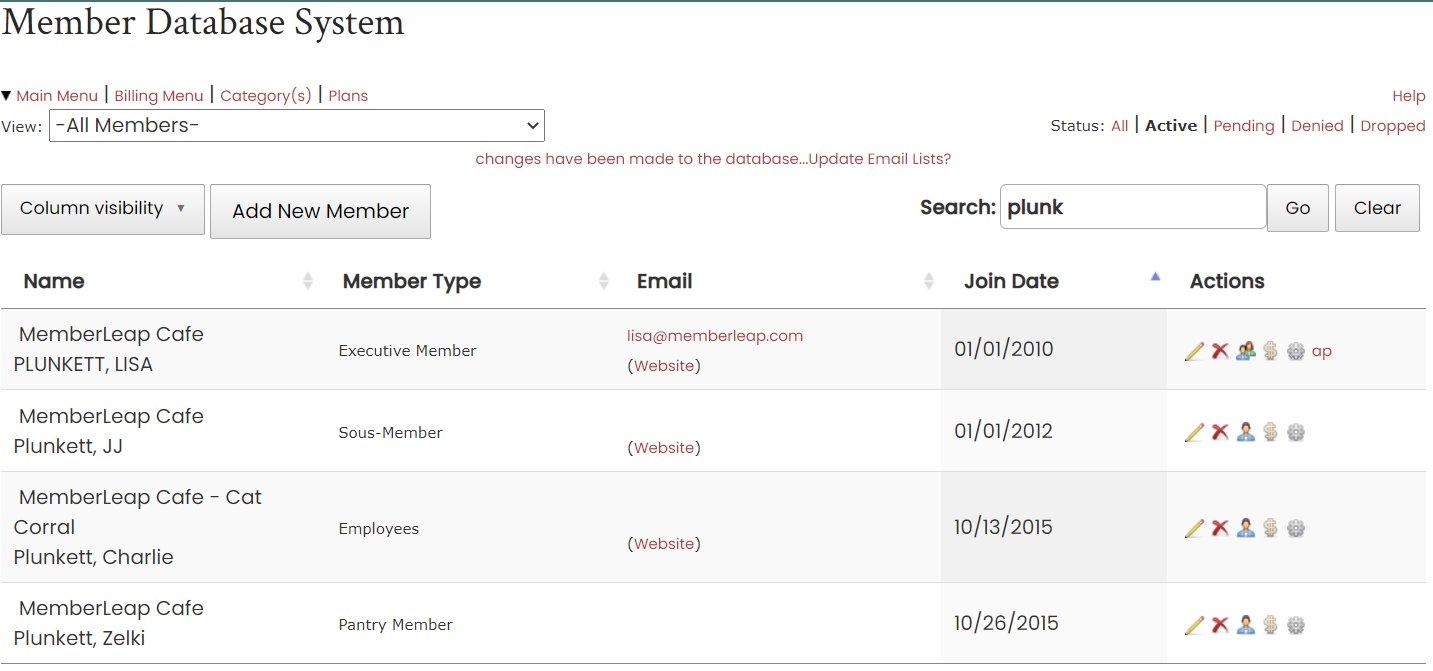 As Web Trochlil of Effective Management Database says, "Use it or lose it." He continues on,
As Web Trochlil of Effective Management Database says, "Use it or lose it." He continues on, Almost every client I've worked with has identified data in the database that is no longer being used. Often it was collected for one-time use (e.g., a point-in-time survey) or was being used and managed by a staff person who has long since left the organization. But the data remains in the database because no one has bothered to clean it out.
You should set aside time periodically (e.g., once every six months) to review your data and get rid of data no longer in use. I call this kind of data "noise" in the database. And the more noise you have, the less faith your users will have in the data (e.g., "Look at all this garbage in here; this data was collected years ago and is no longer being used, but it's still IN here!").
When it comes to your data, use it or lose it.
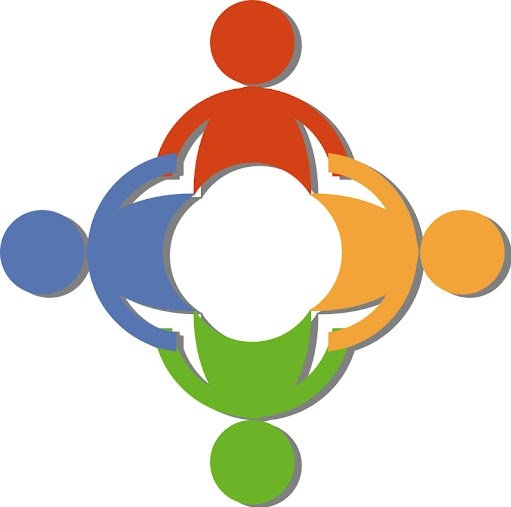 Your board members are critical to the success of your association. Their primary role is to collaborate on decisions that serve the best interest of your association and your members; therefore, communication between them is key. Our committee management feature offers simple tools to successfully accomplish this - broadcast email messages, surveys, and document library.
Your board members are critical to the success of your association. Their primary role is to collaborate on decisions that serve the best interest of your association and your members; therefore, communication between them is key. Our committee management feature offers simple tools to successfully accomplish this - broadcast email messages, surveys, and document library.
Before each board meeting, you should create an agenda where you assign different speakers for various topics and estimate how long each topic should be discussed, so you can stay on task. You can send out the agenda in advance using our broadcast email message module as well as uploading it into your board's document library for easy access.
When voting on key issues during a board meeting (whether in person or during a Zoom meeting), you can properly document and standardize your voting process by using our surveys module, which offers a private tool for each board member to vote yea or nay.
After the meeting, you need to send our meeting minutes to remind board members of action items assigned, to be informational for board members who missed the meeting, and to offer a starting point for the next meeting's agenda. While these minutes should be emailed to all board members, they can also be uploaded into the board's document library for reference later.
If your board members can successfully implement these communication tasks, it can help improve the efficiency and effectiveness of your board.
To learn how to prevent communication mistakes, please read the American Society of Association Executives' Prevent Three Common Board Communication Mistakes article.
 The cost of everything (including salaries, printing, and postage) seems to have increased during the pandemic causing a lot of associations, especially smaller ones, to face economic challenges.
The cost of everything (including salaries, printing, and postage) seems to have increased during the pandemic causing a lot of associations, especially smaller ones, to face economic challenges.
 When emailing your members, write an enticing subject line that tells them exactly what they will get out of it when they open it.
When emailing your members, write an enticing subject line that tells them exactly what they will get out of it when they open it.
Then, get to the point using bulleted items, so they can get the information quicker.
Lisa Boylan, a senior editor of Associations Now, shares a Membership Pro Tip on how to make your communications short and sweet.
*Photo credit: (Artur/iStock/Getty Images Plus)
 The task of asking members to renew their membership in your association during a pandemic can be a delicate and tricky thing. Everything is so uncertain right now.
The task of asking members to renew their membership in your association during a pandemic can be a delicate and tricky thing. Everything is so uncertain right now.You should let them know that you recognize the challenges they are facing and that even though money might be tough right now, you truly appreciate their continued support.
You will want to remind them that their commitment allows your association to continue focusing on its mission, communicating relevant industry specific content, providing valuable member only resources, and offering educational programs and events.
Often it's easier to keep your current members than recruit new ones, so be sensitive to their current situation.
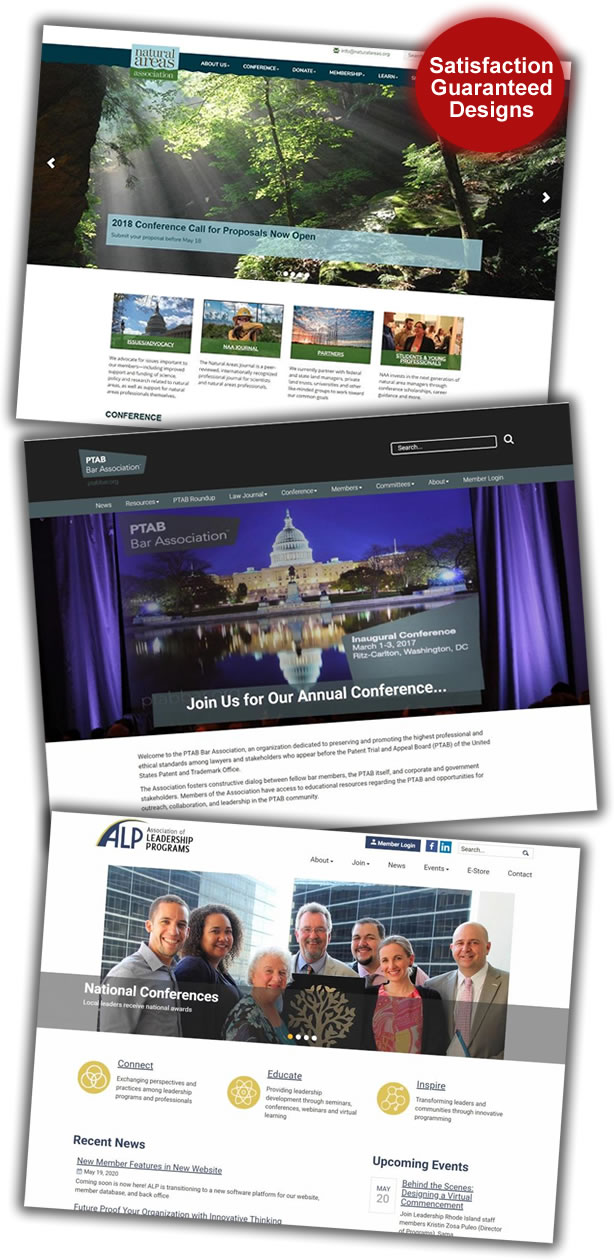 While we are building a website for a new client or a website redesign for a current client, they should both be maximizing their time to conduct a content audit of their current website. Defining their goals, taking inventory of their content, and assessing their content's value is important.
While we are building a website for a new client or a website redesign for a current client, they should both be maximizing their time to conduct a content audit of their current website. Defining their goals, taking inventory of their content, and assessing their content's value is important.
Carrie Hane, coauthor of Designing Connected Content and Association Content Strategies for a Changing World, offers some great tips on how to achieve this.
Then, when it comes time to add content to their new website, they can be strategic about including only the most relevant information for both their current members and prospective members.
After their website goes live, we can perform an advanced SEO analysis to determine if their audit was successful. This analysis will also provide them with a detailed monthly report of their search engine rankings and recommended strategies to improve their results.
 Many years ago, I served on the board of an association, and carried a red folder with slips of paper containing contacting info for prospective members. Each slip of paper would sometimes have multiple other pieces of paper attached and sticky notes with additional info on when the prospect attended an event or when we had contacted them. This was the paper-version of the modern prospect database and CRM system that I later built in the form of MemberLeap, with the aim of providing tools to make membership work easier.
Many years ago, I served on the board of an association, and carried a red folder with slips of paper containing contacting info for prospective members. Each slip of paper would sometimes have multiple other pieces of paper attached and sticky notes with additional info on when the prospect attended an event or when we had contacted them. This was the paper-version of the modern prospect database and CRM system that I later built in the form of MemberLeap, with the aim of providing tools to make membership work easier.Wh
 y the Bee Gees?
y the Bee Gees?At the time of writing, I happened to be listening to a few Bee Gees tunes in my distance-running mix (don’t ask), and somehow made a few connections in the back of my mind. It’s part humor, but part learning tool, and I hope you’ll bear with me. So, let’s quit our Jive Talkin’ and begin our adventure in music and membership management…
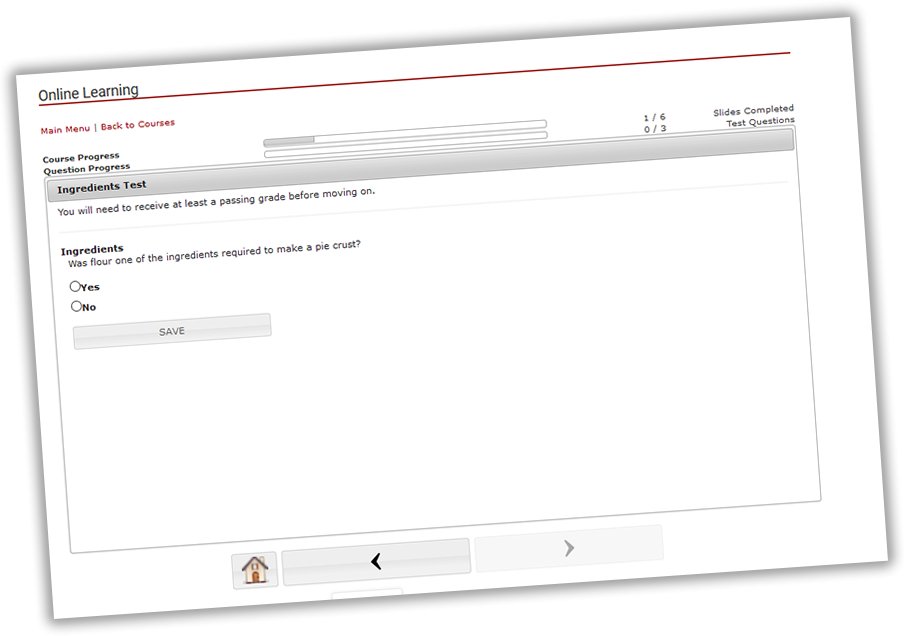 In the face of Covid 19, many associations have sustained significant disruption in revenue due to the cancellation of events (conferences, conventions, and training sessions). Many have made a transition to virtual events, and this has helped those organizations recover a portion of the cash flow.
In the face of Covid 19, many associations have sustained significant disruption in revenue due to the cancellation of events (conferences, conventions, and training sessions). Many have made a transition to virtual events, and this has helped those organizations recover a portion of the cash flow.
One additional possibility that associations might consider is the usage of Online Learning to provide a value-added service to members, and a new source of revenue for the organization. Here at MemberLeap, our product includes a Learning Management System that is designed to allow an association to offer online courses and to monetize them...
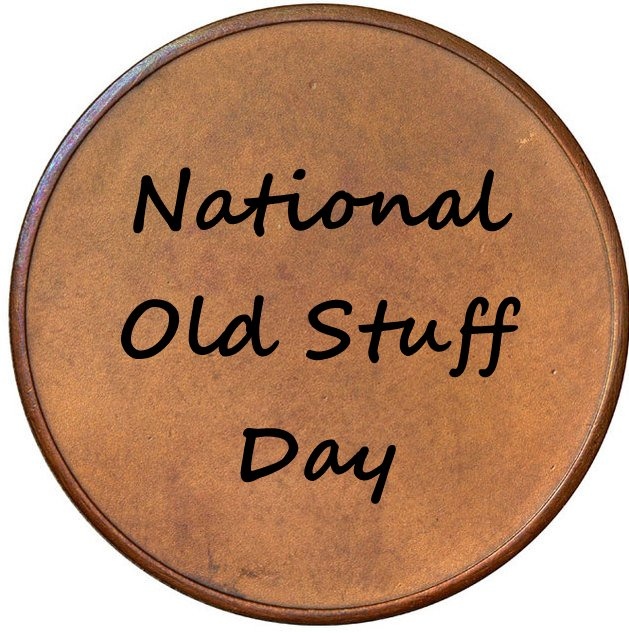 National Old Stuff Day is observed annually on March 2nd and is all about getting rid of the old and trying something new. Today is a great day to considering upgrading from an Excel spreadsheet, Access database, or insufficient association management system to MemberLeap!
National Old Stuff Day is observed annually on March 2nd and is all about getting rid of the old and trying something new. Today is a great day to considering upgrading from an Excel spreadsheet, Access database, or insufficient association management system to MemberLeap!Out with the old... In with the new!
- Member Management
- Communication
- Website Content Management
- Event Management
- E-Commerce
- Donations
- Fundraising
- Education
- Mobile Application
- Web Hosting Services
 February 3-7 is International Networking Day!
February 3-7 is International Networking Day! One of the best ways to encourage engagement (whether networking internationally, nationally, regionally, or locally) and build a strong community is to encourage your members to communicate with one another via a message board.
The message board (forum) is organized into boards and topics. The boards correspond to a category of conversation, and within each board are different topics relevant to that board (category). Once a topic is posted (typically a question), members can then start the discussion and reply to the question (or to other members' replies).
Our message boards offer an email list service, so members have the opportunity to opt-in/opt-out of various boards. If opted in to a given board, they will receive emails when new topics or responses are posted within that board.
PLEASE NOTE: We are excited to announce that will be updating our message board module soon.
February 1st is National Get Up Day!
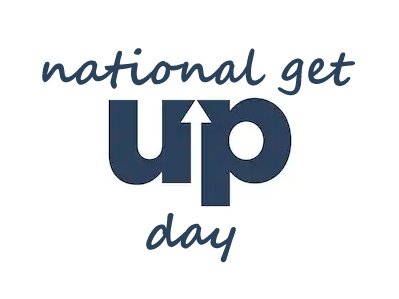
So, get up and start looking for a new membership solution like MemberLeap that can help streamline your organization's day-to-day administrative processes.
Have you checked out all of MemberLeap's many features and their respective benefits yet? If not, today's the day.
 Your privacy is important to us. To better protect your privacy we provide this notice explaining our online information practices and the choices you can make about the way your information is collected and used.
Your privacy is important to us. To better protect your privacy we provide this notice explaining our online information practices and the choices you can make about the way your information is collected and used.
The Information We Collect
This notice applies to all information collected or submitted on the Vieth Consulting/MemberLeap website. On some pages, individual members can enter member data, make requests, and register to receive materials or participate in events, and more. The types of personal information collected at these pages are:
- Name
- Address
- Email address
- Phone number
- Credit/Debit Card Information
- (etc.)
On some pages, administrative level users can submit information about other people. For example, if you are editing your organization’s member data, you will need to submit the member's address. In this circumstance, the types of personal information collected are:
- Name
- Address
- Phone Number
- (etc.)

January 28 is Data Security Day, and security is of great concern to us and to our clients. At Vieth Consulting/MemberLeap, we work very hard to ensure that your data is protected.
System Access
- Password-Protected Members Area - the heart of MemberLeap is the members area. All updates to your data are done through the member's area. Access to the member's area is limited to users with a username and password. After several minutes of inactivity (90 minutes in most cases), a user's session is 'timed-out'. The user then has to log-in again.
- Password Reset - in the event that a user loses their password, they have the ability to re-set it. This allows them to re-gain access, without sending a password in clear text via email.
- Access Log - we keep a record of who logs in and when, recording the IP addresses of each user's access.
- Change Log - in the critical parts of MemberLeap (members, events, billing), we also keep record-change-logs to track when a given piece of member/attendee/event information was changed.
- User Permissions - MemberLeap has a highly flexible way to grant access to users:
- Member-level: This is for general members. They have the ability to change their own information and view whatever information the association chooses to allow them to view.
- Admin-level: Admins have full access to all areas of the system.
- Custom: Member-level users can be granted specific permissions to specific areas, as designated by an admin user.
 January 24 is National Compliment Day, and we want to compliment our amazing clients!
January 24 is National Compliment Day, and we want to compliment our amazing clients!We absolutely love our 600+ clients that have partnered with us and are using MemberLeap to help streamline their administrative day-to-day efficiency!
These clients have a combined total of more than 1.3 million members throughout eight countries using MemberLeap.
❤️ ❤️ ❤️ ️
We also love it when they compliment us back!
 One of the ways to prevent your organization’s staff from feeling burnout and potentially leaving is to give them the tools they need to help streamline their day-to-day administrative tasks… in other words, provide them with a powerful association management system like MemberLeap.
One of the ways to prevent your organization’s staff from feeling burnout and potentially leaving is to give them the tools they need to help streamline their day-to-day administrative tasks… in other words, provide them with a powerful association management system like MemberLeap.
Rebecca Hawk suggests the following ways to re-energize your staff in her American Society of Association Executives article called ‘Four Ways to Re-engage Burned Out Staff:’
- Increase transparency about workload
- Give employees more control over their calendar
- Practice the work-life balance you preach
- Give consistent feedback
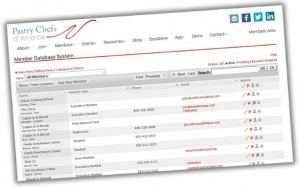 In a recent article by Wes Trochlil of Effective Database Management, he points out that “Every organization should have some type of data management schedule”. Mr. Trochlil inspired this post and we thank him for his inspiration and knowledge!
In a recent article by Wes Trochlil of Effective Database Management, he points out that “Every organization should have some type of data management schedule”. Mr. Trochlil inspired this post and we thank him for his inspiration and knowledge!The staff at MemberLeap and Vieth Consulting (the parent company of MemberLeap and several other divisions of specialty products) try to adopt some of the same principles pointed out by Trochlil when we work with our clients and prospects and their data. Data integrity is very important, no matter how it is used. It is one of, if not, the most important asset an organization has in its arsenal.





